4G LTE Signal Strength Reference Guide
[Close]
Freight lines are currently impacted due to the Cyclone & Flooding and deliveries may take a little longer than usual. If there are any issues please contact us.
In this guide we're going to cover the major differences between the individual 'generation' networks and check out some of the technical aspects of the different technologies.
You'll need a basic understanding of some of the technical terms like megahertz - you can learn more by reading our Guide to Understanding Terminology.
This table gives you a snapshot of the different mobile networks, with general information and the frequencies they use.
| Network | Frequency |
|---|---|
| Telstra Next-G™ | Operates nationally on a single network - 850MHz. This network provides voice, text messaging and 3G internet services to 99% of the Australian population. |
| Telstra 4G | Operates on a single network - 1800MHz. This network provides 4G LTE-A data only services for most major cities and towns. Telstra coverage map |
| Telstra 4GX | Operates on a single network - 700MHz. This network provides 4GX in all capital CBDs and selected suburban and regional areas. |
| 5G | Telstra and Optus are expected to roll out this generation service in 2019, with Vodafone to follow in 2020. Like 4GX and 4G+, this is a data only service. |
| Telstra Resellers (MVNO's) | Currently Boost Mobile is the only reseller of the full Telstra Next-G network. Kogan Mobile resell part of the Telstra Next-G network, but connections are limited to HSPA 7.2Mbps, and only a limited number of cell towers resulting in 97% coverage. |
| Optus 3G | Operates on a dual band network - 900MHz and 2100MHz. This can make things difficult, but can be easily determined by using our Optus Coverage Map guide. Generally speaking the 2100MHz network provides 3G services to metro areas, and 900MHz provides 3G services to regional/rural areas. |
| Optus 4G | Currently operates on a single network - 1800MHz. This network provides 4G LTE-A data only services to major city areas. Acquisition of the 2300MHz band (previously Vivid Wireless) will result in some areas being serviced by this new band in the near future. |
| Optus Resellers (MVNO's) | For the following networks please see the Optus section. Amaysim, Austar, Boost Mobile, ClubTelco, Dodo, Exetel, iiNet, Internode, Live Connected, ONEmobile, People Telecom, Pivotel, Primus, Soul, TPG, Virgin Mobile, Woolworths Mobile. |
| Vodafone | Operates on a tri-band network - 850MHz, 900MHz and 2100MHz. Thankfully the Vodafone Coverage Map in "Network Zone" mode makes this very easy to determine. Most metro areas are covered by 850MHz, with suburban and regional towns covered by 2100MHz, and 900MHz used for remote areas and townships. |
| Vodafone 4G | Operates on 850MHz, 1800MHz and 2100MHz. Check Vodafone's 4G coverage map |
| Vodafone Resellers (MVNO's) | For the following networks please see the Vodafone section. Crazy Johns, GoTalk, JustMobile, Lebara Mobile, Red Bull Mobile, Revolution Telecom, Reward Mobile. |
Before we start
What exactly is a 'G' or 'Generation'? In a nutshell, each Generation is defined as a set of telephone network standards, which detail the technological implementation of a particular mobile phone system.
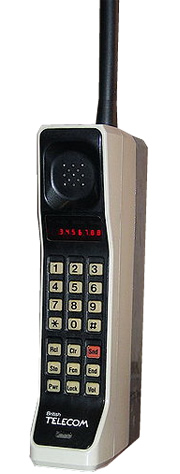
1G - Analog
Introduced in 1987 by Telecom (known today as Telstra), Australia received its first cellular mobile phone network utilising a 1G analog system.
The analog network was responsible for those bulky handheld 'bricks' that you might have had the displeasure of using and your wallet the displeasure of buying (originally retailed at around $4250). eek!
The technology behind 1G was the AMPS (Advanced Mobile Phone System) network.
Permanently switched off at the end of 1999, AMPS was a voice-only network operating on the 800MHz band.
Being a primitive radio technology, AMPS operated in the same manner as a regular radio transmission, much like your UHF radio where the 800MHz band was split into a number of channels (395 voice, 21 control) via FDMA (Frequency Division Multiple Access).
Each channel was 30KHz wide and could support only one user at any time, meaning that the maximum number of mobile phone users per cell tower was 395.
The tower assessed the signal strength of each user and assigned channels dynamically, ensuring that channels could be reused by multiple towers without interference.
Problematic? Yes, and not just because of the limited number of users. Just like your UHF radio, anyone with a radio scanner capable of receiving/transmitting on the 800MHz band could drop in on your call.
Being analog, the 800MHz band was also susceptible to background noise and static caused by nearby electronic devices. However the simplicity of the AMPS design meant it did have one advantage over later 2G networks - coverage.
An AMPS user could connect to a cell tower as far as the signal could be transmitted (often >40km depending on terrain). At its peak, the 1G network had around 2 million subscribers.
2G - Digital
Fast forward to 1993, Telecom introduced the digital network.
The introduction came about to address many of the issues with the AMPS network highlighted above, with network congestion and security being the most important two motivators.
With this new technology came many of the services we now take for granted - text messaging, multimedia messaging, internet access, etc. it also introduced us to the SIM card.
This fancy new digital network is called GSM - Global System for Mobile Communication, and its technological backbone of choice is TDMA (similar to FDMA).
The radio frequency band utilised by GSM is the 900MHz spectrum and was later introduced on the 1800MHz band.
So how is this network any better than AMPS? The secret lies in TDMA - Time Division Multiple Access.
The FDMA component splits the 900MHz (actually 890MHz to 915MHz) band into 124 channels that are 200KHz wide.
The 'time' component then comes into play, in which each channel is split into eight 0.577us bursts, significantly increasing the maximum number of users at any one time.
We don't hear a 'stuttering' of a persons voice thanks to the wonders of digital compression codecs, which we're not going to go into in this guide.
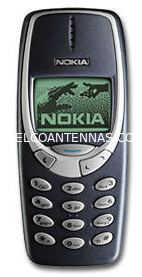
Aside from more users per cell tower, the digital network offers many other important features:
digital encryption (64bit A5/1 stream cipher)
packet data (used for MMS/Internet access)
SMS text messaging
caller ID and other similar network features.
Problems? You bet. Unlike its AMPS predecessor, GSM is limited severely in range.
The TDMA technology behind the 2G network means that if a mobile phone cannot respond within its given timeslot (0.577us bursts), the phone tower will drop you and begin handling another call. How rude!
Aside from this, packet data transmission rates on GSM were extremely slow, and if you're old enough to remember and were on Vodafone/3/Virgin/Optus, you probably had first hand experience when you ventured outside your network's defined 'coverage zone'.
To overcome these problems, they introduced two new networks - CDMA and EDGE.
CDMA (Code Division Multiple Access)
This branch of 2G was introduced by Telstra in September 1999, as a replacement for customers who could receive a good signal on AMPS, but were outside GSM's limited range.
The extended range is achieved by removing the 'time' based multiplexing with a code-based multiplexing. A lower frequency band (800MHz) also assisted in range by reduced path loss and attenuation.
Picture a room full of people having conversations - under TDMA, each person takes their turn talking (i.e. time division), conversely CDMA allows many people to talk at the same time but is the equivalent of each person speaking a different language, i.e. in a unique code.
This, of course, isn't exactly how it works, if you want to know more there are some resources at the bottom of the page.
EDGE (Enhanced Data Rates for GSM Evolution)
GSM introduced a GPRS based packet data network in 2001, with a max speed of around 60-80kbps (downlink), equating to a download speed of 10kB/s - slightly faster than dial-up.
EDGE was later introduced as a bolt-on protocol (no new technology was required) increasing the data rate of the 2G network to around 237kbps (29kB/s).
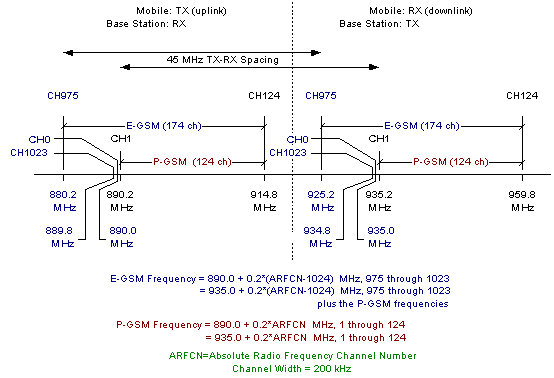 Image: rfcafe.com
Image: rfcafe.com
3G - The Mobile Broadband Revolution
The 2100MHz network.
Three Mobile in conjunction with Telstra brought the 3G standard to life in 2005, servicing major metropolitan areas initially and over the following years expanding coverage to 50% of the Australian population.
Leased out to Optus/Vodafone/Virgin, the 2100MHz combined with a 900MHz network forms the basis of all non-Telstra mobile broadband services, servicing around 94% of Australian residences.
The 3G standard utilises technology called UMTS as its core network architecture - Universal Mobile Telecommunications System. This network combines aspects of the 2G network with some new technology and protocols to deliver a significantly faster data rate.
The base technology of UMTS is the WCDMA air interface, which is technologically similar to CDMA introduced earlier, where multiple users can transmit on the same frequency by use of a code based multiplexing.
Wideband CDMA (WCDMA) takes this concept and stretches the frequency band to 5MHz. The system also involves significant algorithmic and mathematical improvements in signal transmission, allowing more efficient transmissions at a lower wattage (250mW compared to 2W for 2G networks).
The network also employs a much greater secure encryption algorithm when transmitting over the air. 3G uses a 128-bit A5/3 stream cipher which, unlike A5/1 used in GSM (which can be cracked in near real-time using a ciphertext-only attack), has no known practical weaknesses.
So how is 3G faster than EDGE? UMTS employs a protocol called HSPA - High Speed Packet Access, which is a combination of HSDPA (downlink) and HSUPA (uplink) protocols.
The Telstra HSDPA network supports category 10 devices (speeds up to 14.4Mbps down) however most devices are only capable of category 7/8 transmission (7.2Mbps down), and its HSUPA network supports category 6 (5.76Mbps up).
These protocols have an improved transport layer by a complex arrangement of physical layer channels (HS-SCCH, HS-DPCCH and HS-PDSCH).
The only major limitation of the 3G network is, not surprisingly, coverage.
As stated earlier the 2100MHz network is available to around 50% of Australia's population and when combined with a 900MHz UMTS network available to about 94%.
As expected, the higher 2100MHz component suffers far more attenuation and FSPL and is often considered a 'short range' mobile network which is why a lower 900MHz network is required to service many regional and rural areas.
Next-G - 3G on Steroids
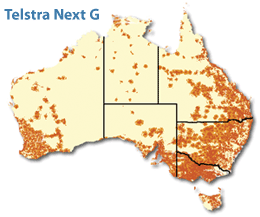
To overcome the coverage limitations of regular 3G, Telstra introduced its Next-G network (considered a '3.5G' network) in late 2006, operating on the 850MHz spectrum.
The lower radio frequency coupled with a far greater number of phone towers is responsible for Telstra's Next-G network being over twice the geographical size (around 2.2 million square km) of any other network, and servicing 99% of Australian residences.
Aside from coverage, the other major selling point behind the Next-G network was its blisteringly fast network speed.
Rated up to 42Mbps (up to 5.25MB/s) the network has the ability to operate faster than the theoretical maximum of most high speed cable internet services. This is the result of an enhanced packet data network - HSPA+ which was implemented in 2008 as an upgrade to large portions of the Telstra network. HSPA+ also known as Evolved HSPA, utilises Dual Carrier technology and 64QAM modulation order to deliver these high speeds.
HSPA+ is responsible for the 'Elite' and 'Ultimate' series modems released in 2010, with the Elite capable of up to 21Mbps, and the Ultimate up to 42Mbps.
The Ultimate series modems theoretically double the speed of the Elite device by the utilisation of Dual Carrier HSPA+. This big increase in speed is achieved by the use of dual antennas, you can think of an Ultimate modem as having two Elite modems in the one unit.
Combining this technology with MIMO "Multiple In Multiple Out" architecture we have seen speeds increase up to 150Mbps with later generation services (more on them later).
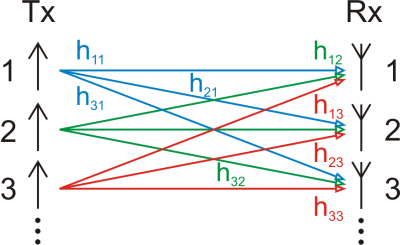 Image courtesy of wikipedia
Image courtesy of wikipedia
4G - LTE-Advanced
Initially available in major cities, airports and selected regional areas in October 2011, Telstra's 4G network offers significantly faster speeds, lower latency, and reduced network congestion.
The 4G network is based on LTE-Advanced - 3GPP Long Term Evolution. LTE is a series of upgrades to existing UMTS technology and will be rolled out on Telstra's existing 1800MHz frequency band.
This network boosts peak downloads speeds up to 100Mbps and 50Mbps upload, latency reduced from around 300ms to less than 100ms, and significantly lower congestion.
Most areas in Australia, 4G has a 15MHz bandwidth and operates on the following frequency ranges:
Tower Tx: 1805-1820MHz Tower Rx: 1710-1725MHz New South Wales and Victoria have a much smaller bandwidth of 10MHz and operate on the following frequencies: Tower Tx: 1805-1815MHz Tower Rx: 1710-1720MHz 4G bandwidth (i.e. the width of frequencies we can send and receive on) is critical in supporting high speed and a high number of users.
In order for your connection not to get confused with someone else's, each user is allocated a small sliver of frequencies that they can transmit on and nobody else can.
You'll notice this most during peak usage hours, where, as more people start using the tower it will reduce the width of your (and everyone else's) sliver of frequencies, resulting in each person getting a reduced download/upload speed.
Naturally this is a very simplified explanation (for more info read up on OFDMA and SCFDMA) but for our purposes it will suffice.
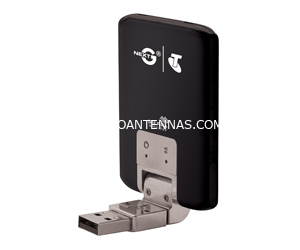
Why 1800MHz?
Given the big reduction in coverage, you might be wondering why Telstra chose to deploy its 4G network on the 1800MHz band.
Like most decisions, the biggest factor governing the choice is money. Already licensed by Telstra, the underutilised 1800MHz network was previously used to provide 2G voice calling and text messaging services, and 2G EDGE data services (often indicated by the 'E' symbol on your phone).
By converting this band from 2G over to 4G, the network can be deployed with drastically reduced cost and time to market.
Instead of building new cell towers, the existing 1800MHz antennas could be swapped with antennas designed for MIMO LTE services and other hardware changes kept to a minimum.
The limited choice of available mobile spectrum means that for the next few years 1800MHz will remain the band of choice for 4G services.
Around 2015, the 700MHz "digital dividend" band became available with much higher performing 4G network with far greater coverage, speed and signal penetration.
What about backhaul?
With a massive increase in speed, how can the cell tower transmit and retrieve all this extra data from the Internet?
Your 4G connection is only as fast as what the phone tower can provide you.
Older EDGE or HSPA networks got away with E1 or optical fibre backhaul links (i.e. the link that connects the tower into the wider network), but LTE services require a far more advanced Ethernet-based backhaul link.
The transition from circuit-switched to packet switched (IP based) networks affords better QoS (through MPLS and other link/network layer protocols) and significant reductions in latency.
MIMO
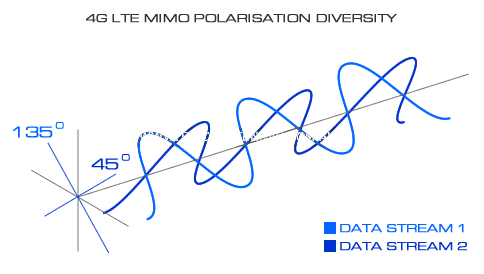
4G uses a technology called MIMO "Multiple In Multiple Out" where your modem uses two separate antennas at once to deliver super fast speeds.
Normal 3G and Next-G signals are broadcast vertically polarised, where the wave travels "up and down". LTE MIMO waves are slant polarised where each wave is rotated 45 degrees from the horizontal, mirrored so the first is at 45 degrees and the other at 135 degrees.
This smart little trick is called polarisation diversity and allows your modem to distinguish two independent streams of data over the same frequency allocated by the cell tower.
Because our modem has two internal antennas each responsible for receiving one stream of data, it is absolutely crucial we have two separate external antennas.
We cannot use a 'Y' patch lead or some other trick to connect both ports of the modem into one antenna, nor can we connect both external antennas into one port.
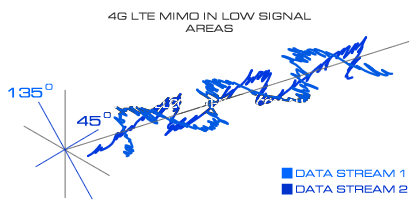
MIMO is switched on and off by the modem. The decision whether to use MIMO is negotiated with the cell tower, whereby the quality of the received and transmitted signals are assessed (a metric known as CQI).
When signal strength or quality is low it's difficult for the modem to distinguish between the two data streams, so when signal levels drop below a certain threshold level, MIMO is switched off and the modem operates with only one antenna (Port 1 on Sierra Wireless modems).
Other guides